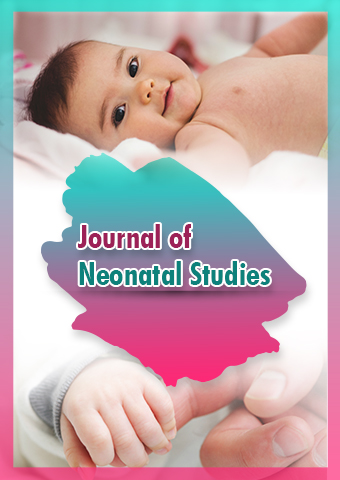Perspective - Journal of Neonatal Studies (2024) Volume 7, Issue 3
Gentle Care: The Importance of Skin Care for Neonates
- Corresponding Author:
- Glen Hooper
Department of Dermatoloy, Griffith University, Australia
E-mail: hooper.g@qm.qld.gov.au
Received: 15-May-2024, Manuscript No. JNS-24-137932; Editor assigned: 17-May-2024, PreQC No. JNS-24-137932 (PQ); Reviewed: 31-May-2024, QC No. JNS-24-137932; Revised: 20-Jun-2024, Manuscript No. JNS-24-137932 (R); Published: 27-Jun-2024, DOI: 10.37532/JNS.2024.7(3).233-234
Introduction
The delicate skin of neonates requires special attention and care to maintain its integrity and promote healthy development. Proper skin care practices not only protect the neonate’s skin from potential irritants and infections but also play a crucial role in bonding, comfort, and overall well-being. In this article, we explore the importance of skin care for neonates, highlighting key considerations, best practices, and common challenges faced by parents and healthcare providers.
Description
The unique characteristics of neonatal skin
Neonatal skin is distinct from adult skin, characterized by several unique features that influence its structure, function, and vulnerability:
Thin and delicate: Neonatal skin is thinner and more fragile than adult skin, with a thinner stratum corneum (outermost layer) and reduced barrier function. This increased permeability makes neonatal skin more susceptible to water loss, irritants, and infections.
Limited sebaceous gland activity: Neonates have fewer functional sebaceous glands, resulting in reduced sebum production and limited skin lubrication. As a result, neonatal skin may appear dry, especially in the first few weeks of life.
Immature barrier function: The skin barrier in neonates is not fully developed at birth, making it more vulnerable to external irritants, allergens, and microorganisms. Immature barrier function also contributes to increased Transepidermal Water Loss (TEWL) and susceptibility to skin conditions such as eczema and diaper dermatitis.
Vernix caseosa: Vernix caseosa is a waxy, white substance that coats the skin of newborns, providing protection and hydration during fetal development. While vernix is often washed off shortly after birth, its presence in the immediate postnatal period can help moisturize and protect neonatal skin.
Importance of skin care for neonates
Skin care plays a critical role in promoting neonatal health, comfort, and well-being, with numerous benefits for both the infant and parent:
Protection: Proper skin care helps protect neonatal skin from environmental stressors, including dry air, temperature extremes, friction, and exposure to irritants and allergens. Maintaining a healthy skin barrier reduces the risk of skin conditions such as dermatitis, eczema, and infection.
Hydration: Hydrated skin is essential for maintaining skin integrity, preventing dryness and discomfort, and supporting normal skin function. Moisturizing the skin with emollients and barrier creams helps prevent moisture loss and maintains skin hydration.
Comfort: Gentle skin care practices, including bathing, massage, and diaper changes, promote comfort and relaxation for the neonate, enhancing parent-infant bonding and promoting emotional well-being.
Prevention of complications: Proper skin care can help prevent common neonatal skin complications, such as diaper rash, cradle cap, and infantile acne. By practicing good hygiene, using appropriate skincare products, and monitoring for signs of skin irritation or infection, parents and caregivers can minimize the risk of skin problems.
Bonding and interaction: Skin-to-skin contact, massage, and gentle touch during skin care routines provide opportunities for bonding and interaction between parents and neonates. These intimate moments promote attachment, communication, and emotional connection between parent and child.
Best practices for neonatal skin care
When it comes to caring for neonatal skin, gentle and minimalistic approaches are often best. Here are some recommended practices for neonatal skin care:
Bathing: Neonates do not require frequent bathing, as excessive bathing can strip the skin of natural oils and disrupt the skin barrier. Instead, parents can bathe their baby 2-3 times per week using lukewarm water and mild, fragrance-free cleansers designed for sensitive skin. Baths should be brief (5-10 minutes) to prevent overexposure to water and minimize skin dryness.
Cleansing: During diaper changes, gently clean the diaper area with mild wipes or plain water, avoiding harsh soaps, alcohol-based wipes, and perfumed products that can irritate the skin. Pat the skin dry with a soft towel rather than rubbing to minimize friction and irritation.
Moisturizing: After bathing or diaper changes, apply a gentle, fragrance-free moisturizer or emollient to the skin to help lock in moisture and maintain hydration. Choose products specifically formulated for newborns with sensitive skin and avoid ingredients such as fragrances, dyes, and preservatives that may trigger skin reactions.
Diaper care: Change diapers frequently to prevent prolonged exposure to urine and feces, which can contribute to diaper rash and skin irritation. Use absorbent, breathable diapers and apply a thin layer of diaper cream or barrier ointment to protect the skin from moisture and friction.
Sun protection: Neonatal skin is sensitive to sunlight and at increased risk of sunburn and damage from UV radiation. Keep newborns out of direct sunlight and avoid prolonged sun exposure, especially during peak hours (10 am to 4 pm). If sun exposure is unavoidable, use protective clothing, hats, and sunscreen formulated for infants with a minimum SPF of 30.
Common challenges in neonatal skin care
Despite best efforts, parents and caregivers may encounter challenges and concerns related to neonatal skin care. Common issues include:
Dry skin: Neonatal skin is prone to dryness, especially in the first few weeks of life. Dry skin may appear flaky, rough, or scaly, particularly in areas with high friction or low humidity. To address dry skin, parents can moisturize the skin regularly and avoid over bathing or using harsh soaps.
Diaper rash: Diaper rash is a common skin condition characterized by redness, irritation, and inflammation in the diaper area. It is often caused by prolonged exposure to moisture, friction, and irritants from urine and feces. To prevent diaper rash, change diapers frequently, keep the diaper area clean and dry, and apply a protective barrier cream or ointment as needed.
Infantile acne: Infantile acne is a benign skin condition characterized by small red or white bumps on the face, usually appearing in the first few weeks of life. While infantile acne typically resolves on its own without treatment, gentle cleansing and moisturizing may help alleviate symptoms.
Cradle cap: Cradle cap is a common scalp condition characterized by thick, yellow or white scales or crusts on the baby’s scalp. Gentle shampooing and regular brushing with a soft brush or comb can help loosen and remove scales. Avoid picking or scratching the scalp, as this can lead to skin irritation and inflammation.
Conclusion
Caring for neonatal skin requires knowledge, patience, and gentle handling to ensure optimal health and well-being. By adopting gentle skin care practices, avoiding harsh products and irritants, and promoting skin-to-skin contact and bonding, parents and caregivers can help protect and nurture their baby’s delicate skin, promoting comfort, health, and happiness in the early days of life.

